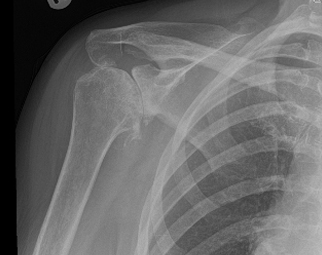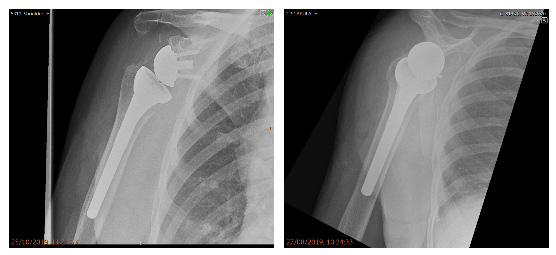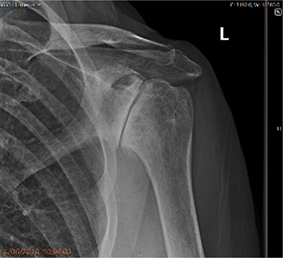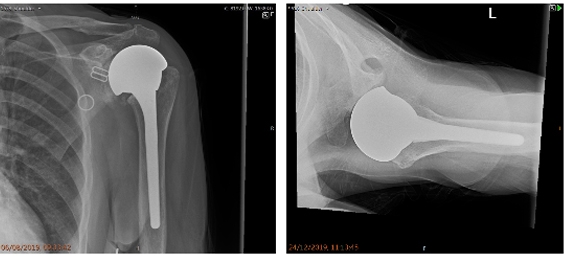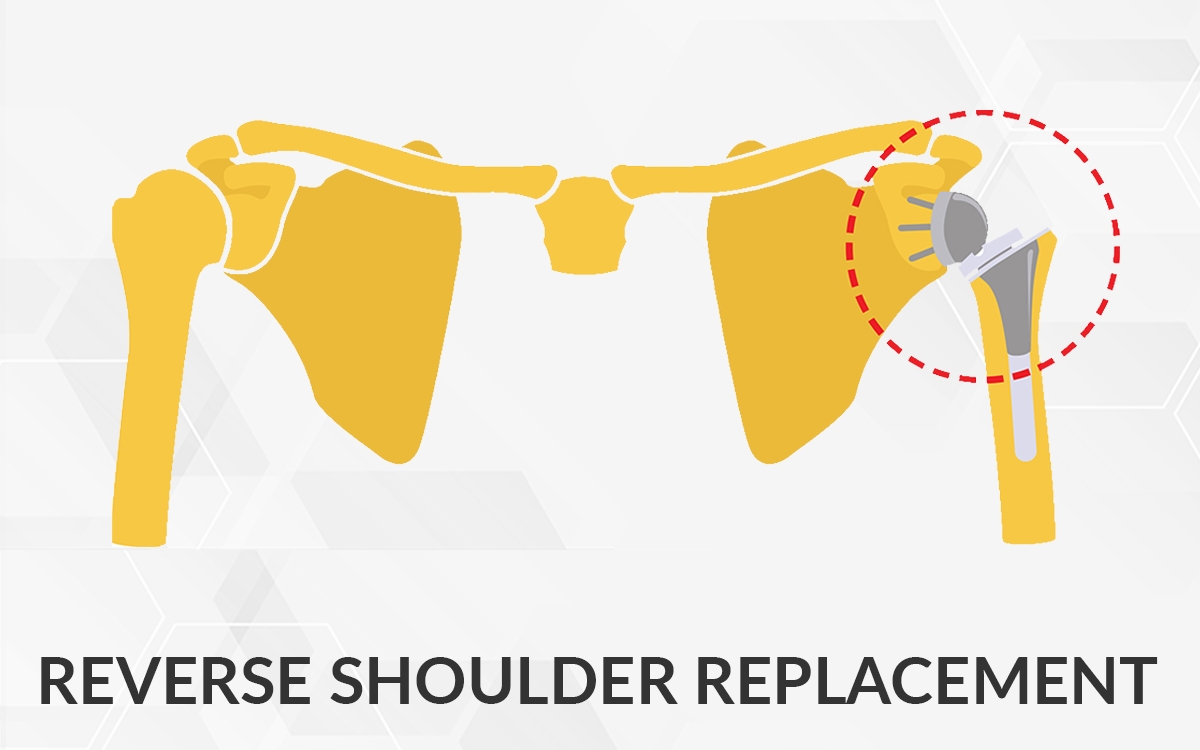
Summary
Causes
- Arthritis of the shoulder joint
Symptoms
- Pain
- Stiffness in the shoulder
- Reduced motion of the joint
Surgery is undertaken
- Only when all non-surgical methods are exhausted
- Artificial components replace parts of the bones
What is a reverse shoulder replacement?
The shoulder is a ball and socket joint made up of arm bone (humerus) which forms the ball and the shoulder blade which forms the socket (glenoid). When arthritis affects the shoulder joint it causes the lining of the joint surfaces to wear causing pain, stiffness and reduced motion.
In a reverse shoulder replacement a normal ball and socket structure is reversed. An artificial ball is attached to the shoulder blade and an artificial socket is attached to the top of the arm bone. This allows the large deltoid muscle that covers the shoulder to move your arm with less
force.
Why would you need a reverse shoulder replacement?
- It may be needed if you have a completely torn rotator cuff that cannot be repaired and you are in pain
- If you have a completely torn rotator cuff with arthritis and pain in the glenohumeral joint (cuff tear arthropathy)
- Previous shoulder replacement that was unsuccessful
What are its benefits?
Reverse shoulder replacement has a very good outcome and helps reduce your pain and increase range of motion. This in turn helps you with your normal day to day activities.
What are the risks?
It is a safe procedure with a high success rate. Risks includes infection, injury to nerves mainly axillary nerve and brachial plexus, damage to blood vessels, stiffness to shoulder (frozen shoulder), implant problems like loosening of the components, wearing of the plastic liner, dislocation, fracture of a bone during insertion of components. Overall the risk is between 10-20%.
Implants usually last for 10 to 15 years and gives a good quality of life during this period. After this time a patient may need a revision replacement.
What is the surgery like?
You are offered a shoulder replacement once you have exhausted all the non-surgical treatments like painkillers, physiotherapy and steroid injections.
Surgery is normally done with a nerve block of the arm and a general anaesthetic. The incision is in the front of the shoulder and surgery takes about 2 to 3 hours. The head of the humerus and the glenoid is replaced with artificial components. Screws will be used to hold the components in place.
What happens after the surgery?
You will stay in hospital for 2 to 3 days where you will be seen by a physiotherapist, who will discuss shoulder, elbow and hand therapy with you. They will also look at your circumstances at home and advise you on your day to day activities.
Postoperative pain is managed with pain medication either orally or intravenously if needed.
What results can I expect from a reverse shoulder replacement?
Approximately 85-90% of patients who have this operation get excellent pain relief. It also helps restore range of motion to the shoulder level. Most patients should be able to reach the top of their head without the need to tilt their head. Movements should improve in all other directions but if the rotator cuff was completely torn then patients will lack external rotation (ability to reach out to the side away from the body).
What do I need to do when I go home?
You will be sent home with painkillers. Your arm will be in a sling for around 4 to 6 weeks. You will carry on with rehabilitation as directed by the physiotherapist.
Reduce bulky dressing in 2 days. Clinic appointment will be made at 2 weeks for the stitches to be removed.
Driving can be resumed around 6 weeks. Your shoulder will continue to improve for 9 to 12 months.
BMI Chelsfield Park Hospital
Bucks Cross Road Chelsfield ORPINGTON BR6 7RG
01689 877855
BMI The Blackheath Hospital
40-42 Lee Terrace Blackheath LONDON SE3 9UD
020 8318 7722
BMI The Sloane Hospital
125 Albemarle Road BECKENHAM BR3 5HS
020 8466 4000
Princess Royal University Hospital
Farnborough Common ORPINGTON BR6 8ND
01689 863223




